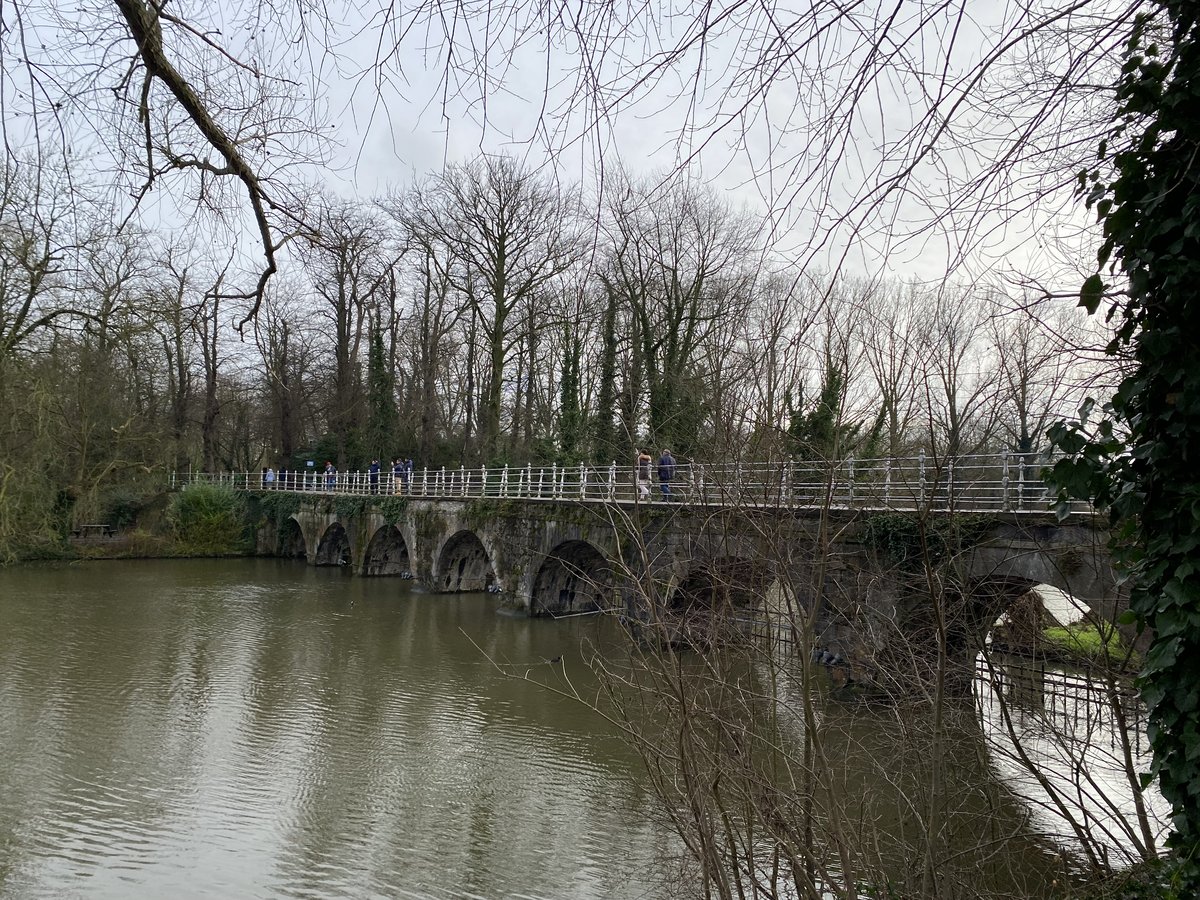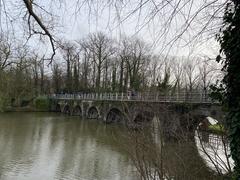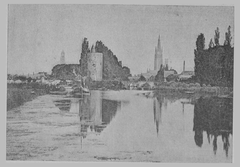
Minnewaterbrug Visiting Hours, Tickets, and Comprehensive Guide to Bruges Historical Sites
Date: 14/06/2025
Introduction: The Enduring Romance of Minnewaterbrug
Minnewaterbrug, known as the Lovers’ Bridge, is one of Bruges’ most beloved and picturesque landmarks, drawing visitors with its romantic ambiance, medieval roots, and scenic beauty. Located at the southern edge of the historic city center, this iconic bridge spans the tranquil Minnewater—literally the “Lake of Love”—and serves as a living symbol of Bruges’ rich history and cultural heritage. Steeped in legend and surrounded by lush parklands and graceful swans, Minnewaterbrug is both a tranquil escape and a vibrant gateway to Bruges’ storied past. Whether you’re seeking photographic inspiration, an immersion in local folklore, or simply a peaceful stroll, this guide will provide all the practical and historical information you need, from visiting hours and accessibility to nearby attractions and insider travel tips. For further details and the latest updates, consult official resources like Visit Bruges and curated travel sites such as Evendo.
Table of Contents
- Introduction
- Historical Background
- Visiting Minnewaterbrug: Practical Info
- Nearby Attractions
- Frequently Asked Questions (FAQ)
- Summary and Recommendations
- Sources and Further Reading
Historical Background of Minnewaterbrug
Origins and Geographical Context
Minnewaterbrug is strategically positioned at the southern entrance to Bruges’ historic core, crossing the Minnewater lake. The city’s rise was closely tied to its waterways; the River Reie and a network of tidal channels enabled Bruges to flourish as a medieval trading hub (Visit Bruges). The Minnewater area itself originally served as Bruges’ port, bustling with boat traffic and commerce after a 12th-century storm created a navigable link to the sea (Smart Water Magazine).
Medieval Importance and Urban Development
Throughout the Middle Ages, Minnewater was both a defensive and commercial site. The bridge connected the city ramparts to the Begijnhof—a UNESCO-listed enclave—and played a role in protecting Bruges from invaders while supporting vibrant trade. The current Minnewaterbrug, dating to the late 19th century but with roots reaching back centuries, was designed by Henri Pulinx and originally functioned as a controlled access point, with a now-lost tower and the still-standing Powder Tower flanking its ends (Bruges Official Tourism).
Legendary Romance and Symbolism
Minnewaterbrug is enveloped in local legend, most famously the story of Minna and her lover Stromberg. According to folklore, Minna died near the lake after fleeing an unwanted marriage, and her tragic tale has imbued the site with lasting romantic symbolism. Tradition holds that couples who cross the bridge together will be blessed with eternal love (Amazing Belgium; Evendo). The presence of swans—mandated by a 15th-century imperial decree—enhances the bridge’s association with fidelity and romance (Smart Water Magazine).
Architectural Features
Minnewaterbrug is constructed from masonry with a series of low, rounded arches and decorative wrought-iron railings. Now exclusively pedestrian, it offers panoramic views of the Minnewater, the Begijnhof, and the city ramparts. The bridge’s understated elegance harmonizes with Bruges’ medieval architectural landscape, and its illuminated presence at night adds to the fairytale atmosphere.
Visiting Minnewaterbrug: Practical Information
Hours and Tickets
- Hours: The bridge and surrounding Minnewaterpark are open to the public 24/7, year-round. Park areas are best enjoyed from dawn to dusk (typically 8:00 AM–8:00 PM), though the bridge itself remains accessible at all times.
- Tickets: Entry to Minnewaterbrug and Minnewaterpark is free. No ticket is required. Some nearby sites, such as the Begijnhof museum, may charge an admission fee.
Accessibility
- The bridge and main park paths are paved and wheelchair/stroller accessible.
- Benches, restrooms, and nearby cafes offer comfort and convenience.
Getting There
- By Foot: A 10-minute walk from Bruges’ main railway station; about 20 minutes from Markt square.
- By Public Transport: Buses stop near the park entrance.
- By Car: Parking is available on the city’s outskirts, with pedestrian routes leading to Minnewaterpark.
Seasonal Tips
- Best Time to Visit: Spring and autumn offer vibrant foliage and fewer crowds. Early morning and late evening visits provide tranquil settings and optimal lighting for photography (The Travel Tinker; Afternoon Tea Reads).
- Weather: Pack layers and a raincoat; Bruges weather can change quickly (The Discoveries Of).
- Events: Check local listings for festivals, such as the annual Cactus Festival each July (The Travel Tinker).
Events and Guided Tours
- Guided Tours: Many walking tours include Minnewaterbrug, focusing on Bruges’ history and romantic legends. Boat tours on nearby canals offer unique perspectives.
- Festivals: Cultural events and live music performances, especially during summer, animate the park and bridge.
Nearby Attractions
- Begijnhof (Beguinage): UNESCO World Heritage site with tranquil gardens and historic buildings.
- Poertoren (Powder Tower): Medieval military structure at the park’s edge.
- De Halve Maan Brewery: Offers tours and tastings.
- St. John’s Hospital (Sint-Janshospitaal): One of Europe’s oldest hospitals, now a museum.
- Bruges’ Canals: Boat tours depart nearby, providing scenic views.
Frequently Asked Questions (FAQ)
Q: What are the Minnewaterbrug visiting hours?
A: The bridge and park are open 24/7 year-round; daylight hours are ideal for safety and the best experience.
Q: Is there an entry fee for Minnewaterbrug?
A: No, access is free.
Q: Is Minnewaterbrug wheelchair accessible?
A: Yes, the bridge and main park paths are suitable for wheelchairs and strollers.
Q: Are guided tours available?
A: Yes, many local walking and boat tours include Minnewaterbrug.
Q: When is the best time to visit for photography?
A: Early morning or late evening during spring or autumn provides the best light and fewer crowds.
Q: What wildlife can I see at Minnewaterbrug?
A: Swans and ducks are common, adding to the romantic setting.
Summary and Visitor Recommendations
Minnewaterbrug embodies the enchanting spirit of Bruges—a blend of history, legend, and natural beauty that captivates all who visit. With its free, year-round access and wheelchair-friendly design, the bridge welcomes everyone, from couples seeking romance to history enthusiasts and photographers. Proximity to the Begijnhof and Powder Tower adds historical depth, while festivals and guided tours offer dynamic experiences. For a peaceful and memorable visit, plan your trip during the early morning or late afternoon in spring or autumn and consult the official Visit Bruges website for the latest information. Enhance your experience with travel tools like the Audiala app for audio guides and real-time updates.
For enhanced engagement, include high-quality images with descriptive alt text and interactive maps in your digital publication.
Sources and Further Reading
- Visit Bruges - Minnewaterbrug (Lovers’ Bridge)
- Evendo - Lovers’ Bridge Minnewaterbrug
- Bruges Official Tourism
- Free-City-Guides.com - Lovers’ Lake
- Smart Water Magazine - Four Magical Stories About the Origin of Minnewater Lake
- Amazing Belgium - The Legend of Minna and Minnewater
Download the Audiala App for guided tours, audio histories, and updates on Bruges and Minnewaterbrug. Follow us on social media for travel inspiration and tips.












































































